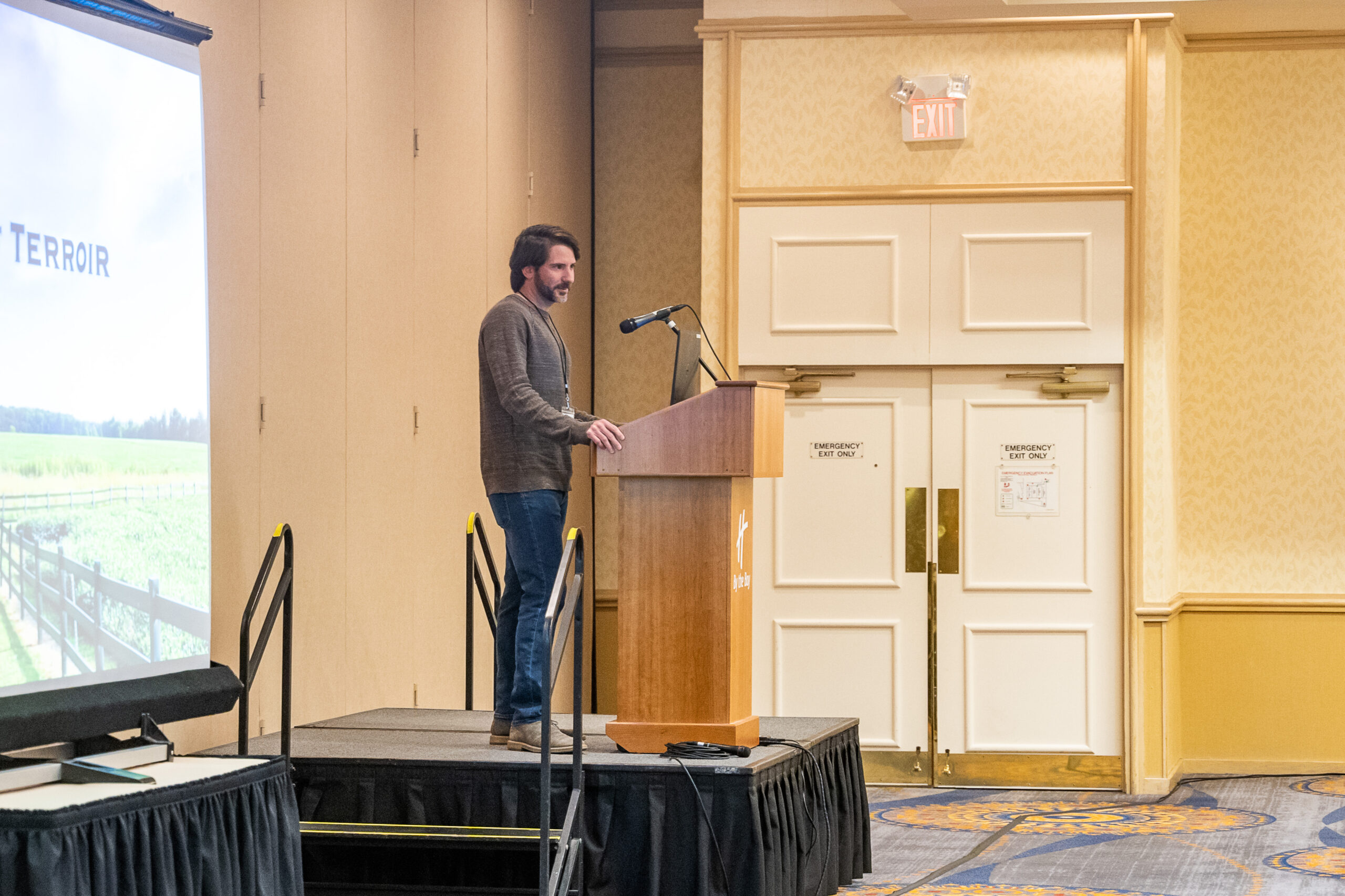While it’s generally understood— and celebrated— that the place in which ingredients are grown impacts flavor, skeptics of terroir in malt-based beverages seem to focus on the etymology of the word; especially because of its origins in winemaking.
Terroir as Webster defines it is “the combination of factors including soil, climate, and sunlight that gives wine grapes their distinctive character.” Because grapes are so minimally processed before fermentation to make wine, we have the ability to taste and trace them back to the field from whence they came. That footprint is more challenging to map for grains blended from different fields, farms, or further, and considering a wide range of chemical reactions during the malting process.
That mapping process is exactly what Rob Arnold did— and told the story about— in his book The Terroir Of Whiskey. Arnold is a Master Distiller and the President at Advanced Spirits, who also recently completed a Ph.D. in plant breeding and genetics from Texas A&M University. His research spells out the chemistry supporting that terroir affects flavor in whiskey (which you can read about in his book). He lands on what Kentucky journalist Tom Johnson calls an “expansive definition of terroir” in a book review, quoting Arnold who wrote, “It was more than just the environment. “It was the overall ecological system of a farm or vineyard, that complicated interplay of nature and nurture.”
After hearing Arnold share his story and his research at the 2023 Craft Malt Conference in Portland, Maine, I was curious to hear what other plant breeding and genetics experts thought. So I asked the researchers I interviewed for the Guild’s Field To Bench Series this year. As it turns out, the definition of terroir depends on who you’re asking.

….
Jeremy Schmutz, HudsonAlpha Institute of Biotechnology Faculty Investigator and Co-Director of the HudsonAlpha Genome Sequencing Center (GSC), confirms unequivocally that plant flavor varies from region to region, barley being no exception. “I could definitely say that after having spent a week and a half [in the UK] drinking English barley-based beers that I notice the difference from what I drink in the United States.”
Schmutz, and everyone else I’ve ever encountered on the Field To Bench series, was mindful to note the huge number of factors that can affect flavor, and the differences he was perceiving overseas. He reminds that it wasn’t until very recently that we could explore the idea of a single-origin malt expression.
Now because professionals across the supply chain are zooming in on varietals, regions, and even specific fields, farmers can reinvigorate heirloom crops and end-use producers can select batches of small grains based on flavor, and many other specifications too.
Here’s Matthew McCarroll, Professor of Chemistry and Director of the Fermentation Science Institute at Southern Illinois University, on the idea of terroir in beer and spirits: “Of course there is. There are so many factors that impact flavor, though, so I think it’s very difficult to prove– right? Let’s ask, Why are people willing to pay so much money for Maris Otter malt? Is the flavor that we appreciate for Maris Otter from the fact that we know that it’s floor-malted? Or from the variety that’s been retained for so long? Things that you know about a product impact how you perceive it, or how you enjoy it.”
McCarroll adds, “Is to know where it comes from— the sense of place, the environment, those kinds of things— to really understand and to legitimize how those impact flavor?”

McCarroll and many of the scientists I spoke with take an open-ended, curious approach to understanding the flavor of place.
The study of environmental and geographic impacts on flavor is both vast, and ever-changing. “Even the smallest kinds of changes in the environment can trigger these cascades of genes that turn on and off in different ways that lead to different phenotypes,” explains Alex Harkess, HudsonAlpha Institute of Biotechnology Faculty Investigator. “Plant genomes are not incredibly stable, and they do not respond in the exact same way in different places.”
This variability is something to embrace, Harkess adds. “Especially as we move forward with potentially changing climate both on a small scale and a large scale. So I think the barley community should be excited about the idea that there is this aspect of terroir in malt. I don’t drink wine so to speak, but I do believe in genetics.”

….
Call it terroir, provenance, or whatever else– but place and time impact plants, and the beverages made with them. Beyond flavor diversity, small scale farming yields the element of story that Arnoold captures beautifully in the conclusion of his book:
“But what these chemical data don’t do is capture the human element. Origin, heritage, history— the forces that shape people also shape their whiskeys. There’s a phrase I began using as I wrote this book, which I feel sums up what I mean by the human element: the pursuit of terroir. This was my eureka moment. The pursuit of terroir is ultimately more meaningful than the scientific proof of it.”



You must be logged in to post a comment.